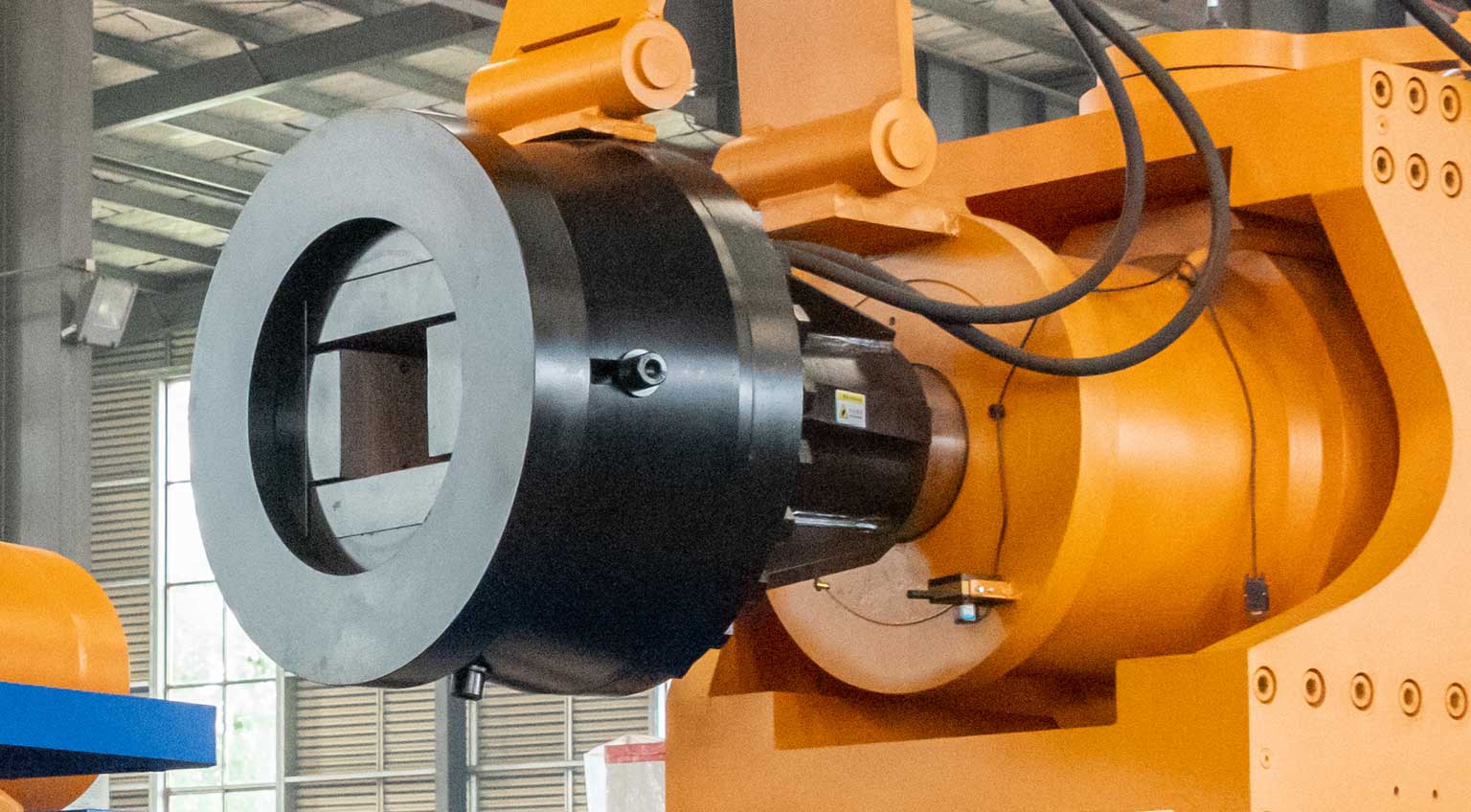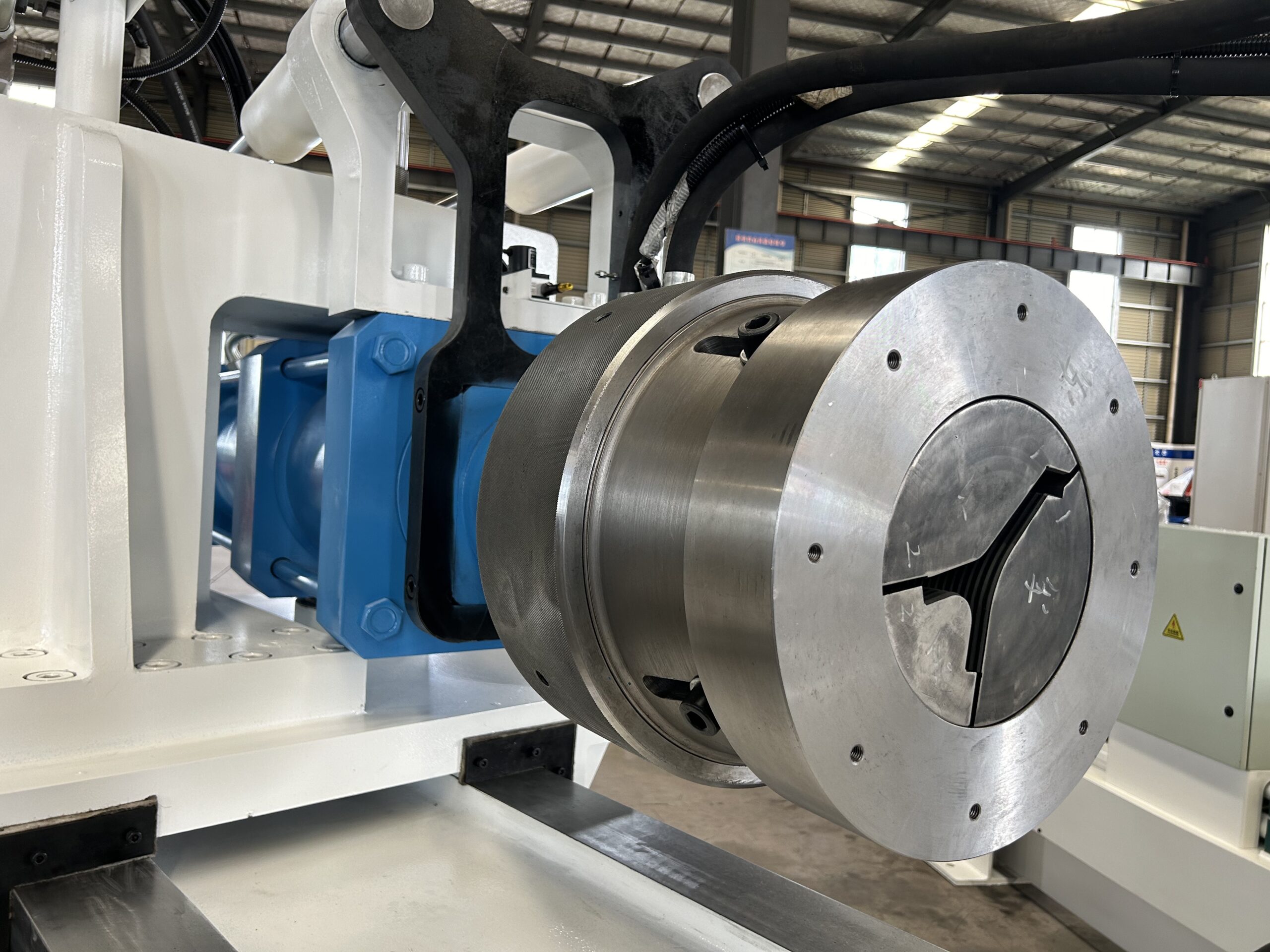Focused on the phenomenon of cross-sectional distortion during the bending process of hollow aluminum profiles, this study, using 6061 hollow aluminum profiles as the research subject, primarily analyzes the effects of filling conditions and reinforcement parameters on post-bending cross-sectional distortion. The results indicate that the cross-sectional concavity significantly decreases after filling sand into the hollow aluminum profiles compared to unfilled ones. Reinforcing the inner wall of the hollow aluminum profiles during bending, especially by increasing the reinforcement height, proves advantageous in reducing cross-sectional concavity. Moreover, increasing the reinforcement width results in a decrease in the width thickness of the profile, further aiding in lowering cross-sectional concavity. Under the premise of minimizing post-bending cross-sectional concavity and cost, reinforcing the hollow aluminum profiles and filling the cavities before bending not only minimizes profile weight gain but also offers advantages such as ease of industrial production and low production costs.
Aluminum alloy has higher specific strength, specific stiffness, excellent processing performance, and durability, making it an ideal material for automotive lightweighting. Among them, 6061 aluminum alloy, as a typical alloy in the 6xxx series, has moderate strength, plasticity, and welding performance, and is commonly used as structural components and body structural materials with strength and corrosion resistance requirements.
Bent Aluminum Profiles
As the process of automotive lightweighting progresses, aluminum alloy frame structures have gained widespread attention from automotive manufacturers for their lightweight and safety advantages. The use of bent aluminum profiles in frame structures not only reduces assembly processes but also offers higher overall strength and aesthetic advantages.
As one of the most widely used methods for bending aluminum extrusions, one major advantage of roller bending is that you can bend the entire extruded length at once instead of bending one segment at a time. However, it may require progressive rolling to achieve tighter bends, gradually reducing the bend radius to the desired curvature. The consequence of this incremental rolling may include lower precision and poorer scalability compared to other methods. These limitations often make roller bending more suitable for medium to low-volume production runs and are an ideal choice for prototyping.
The three-roll bending of PBA aluminium profile bending machines provides the lowest tooling cost, allowing profiles to be rolled in one pass or repeatedly as needed. Custom profile bending shapes include full circular sections, C-shapes, U-shapes, 3R shapes, multi-segment arc programs (variable curvature), Helical Spiral Bending, Reverse Curve Bending, and even three-dimensional spatial components.
Issues to Address During Aluminum Profile Bending
However, during the bending process, aluminum alloy profiles are prone to defects such as springback, wrinkling, and section distortion. While springback can be addressed by obtaining correct bending parameters through multiple tests, defects like wrinkling and section distortion can cause differences in width on both sides of the profile, not meeting flatness requirements.
Section Distortion
Common solutions for section distortion include cavity filling or modifying the profile section (adding reinforcement). Cavity filling with materials such as PP, PU, and PVC not only increases costs significantly but also has low reuse rates. Modifying the profile section, especially with significant changes, requires remaking extrusion molds, resulting in high costs. Researchers at a Chinese aluminum extrusion company, including Lu Youqing, studied a hollow 6061 profile to address section distortion in production. They analyzed the effects of filling conditions, reinforcement height, and reinforcement width on section distortion after aluminum alloy bending, proposing the most suitable method for addressing section distortion in hollow rectangular profiles, providing data references and considerations for addressing similar issues in the future.
Research on bending hollow aluminum extrusion with filled sand


Experiment materials are 6061 aluminum alloy extruded profiles, and the bending diagram of aluminum profiles is shown in Figure 1(a). The lateral spacing of the curved part of the profile is 450 mm, and the longitudinal spacing is approximately 270 mm, with an inner radius of 250 mm. The outer contour of the profile section is a 60×60 mm hollow profile, as shown in Figure 1(b), with a wall thickness of 3 mm in the bending direction. The profile bending test was conducted on a PBA 1000 3D aluminum profile bending machine.
Experimental Design

Reinforcements were added to the inner wall surface of the curved section of the aluminum profile, as shown in Figure 2, where 2 ribs were uniformly added to enhance the bending resistance of the curved surface. Rib height (h), rib width (b), and sand filling conditions are shown in Table 1. Measurements were taken at the same position of the profile after bending using a three-axis automatic coordinate measuring machine, located at the maximum concavity of the inner curve where it intersects with the straight section.
To characterize the section distortion of the profile, the concavity rate ε0 is introduced for quantification:
ε0=(H−h/H)×100%
Where:
- H is the height of the profile.
- h is the minimum height of the profile after bending.
| Plan | Width of Ribs | Hight of Ribs | Whether to Fill with Sand |
| Plan 1 | 0 | 0 | No |
| Plan 2 | 0 | 0 | Yes |
| Plan 3 | 4 | 2 | No |
| Plan 4 | 4 | 4 | No |
| Plan 5 | 4 | 6 | No |
| Plan 6 | 2 | 6 | No |
| Plan 7 | 4 | 6 | Yes |
Experimental Results and Analysis
Effect of Sand Filling on Section Distortion

The influence of sand filling on section distortion after bending was initially studied on the original profiles. The effect of sand filling on section distortion is shown in Figure 3. It can be observed that the depth of profile concavity increases with the distance from the edge, reaching its maximum value in the central area. The depth of concavity for the unfilled profile is 7.5 mm, corresponding to a concavity rate of 12.5%; after sand filling, the depth decreases to 4.9 mm, with a concavity rate of 8.2%. Filling the profile with sand significantly reduces the depth of concavity, indicating an improvement in section distortion after bending. This suggests that pre-filling the profile cavity with sand before bending effectively supports the inner wall of the cavity during bending, weakening the section distortion caused by instability, thereby reducing the concavity rate. However, even after sand filling, the concavity rate of the bent aluminum profile remains above the acceptable range.
Effect of Rib Height on Section Distortion

Adding ribs to the inner wall effectively prevents section concavity caused by profile bending, but rib dimensions significantly affect the concavity rate after bending. Figure 4 shows the effect of different rib heights on section distortion after bending for a rib width of 4 mm. It can be seen that adding ribs significantly improves section distortion after bending. As the rib height increases, the section distortion after bending gradually improves. For rib heights of 2 mm, 4 mm, and 6 mm, the concavity depths measured after bending are 6.7 mm, 6.5 mm, and 6.4 mm, respectively, corresponding to concavity rates of 11.2%, 10.8%, and 10.7%. The main cause of wrinkling in profile bending is compressive instability due to compressive stress, which can be addressed by improving the stress structure of the workpiece. When the aspect ratio of rib width to thickness is constant, improving the stress distribution on the inner wall of the aluminum profile during bending can improve its resistance to deformation. With increasing rib height, the stressed area at the rib increases, allowing it to resist greater deformation under the same load. Thus, increasing rib height significantly reduces the depth of concavity on the inner wall of the profile after bending, thereby decreasing the concavity rate.
Effect of Rib Width on Section Distortion

In addition to rib height, rib width is also an important factor affecting section distortion. Figure 5 shows the effect of rib width on section distortion after bending for a rib height of 6 mm. It can be observed that rib width also affects section distortion after bending. After bending, the concavity depths on the inner curve surface for rib widths of 2 mm and 4 mm are 6.9 mm and 6.4 mm, respectively, and the concavity rates decrease from 11.5% to 10.7%. Different rib widths affect the section distortion after bending by influencing the aspect ratio of the profile and the bending performance of the ribs. Rib width reduces the aspect ratio of the profile during bending, increasing the critical buckling stress and thus reducing the depth of concavity after bending. Additionally, as rib width increases, the stressed area increases, making the profile less prone to deformation under the same load, thereby reducing the section distortion rate after bending.
Effect of Ribbing and Sand Filling on Section Distortion

As described above, both sand filling and ribbing can improve section distortion on the inner curve surface after bending, but the improvement effect of a single method is not ideal. To address this issue, the rib parameters with the lowest concavity rate after bending were selected for sand filling experiments. The concavity depths of the profile after bending with reinforced ribs are shown in Figure 6.
From the figure, it can be seen that after bending, the concavity depth on the inner curve surface of the ribbed profile decreases from 6.4 mm without sand filling to 1.3 mm, significantly lower than the concavity depth of 7.5 mm for the profile after bending in Scheme 1, meeting the customer’s requirement of concavity depth ≤2 mm. Therefore, the influence of sand filling on section distortion after bending is greater than that of rib parameters. A single method alone is difficult to achieve the desired concavity state. To meet the requirements of lightweight mass production at the lowest production cost, a combined approach of ribbing and sand filling can effectively address the concavity of the profile inner wall after bending, meeting customer requirements for section distortion while adding minimal weight to the profile and maintaining low production costs.
Conclusion
This study investigated the problem of section distortion of 6061 hollow aluminum profiles after bending, focusing on the effects of section rib parameters and sand filling on section distortion of the inner curve surface after bending. After sand filling, the concavity rate of the profile after bending significantly decreased. As the rib height increased, the resistance to deformation at the ribbed area increased, resulting in a gradual decrease in the concavity rate after bending. As the rib width increased, the aspect ratio of the profile decreased, the resistance to deformation increased, and the concavity rate after bending decreased. Through this study, the influence of rib parameters and sand filling on the concavity rate of rectangular hollow profiles after bending was mastered, and a method to address section distortion after bending was proposed, which has the advantages of minimal weight increase, low production cost, and ease of industrial production.
Resource: Analysis on the Influence Factors of Bending and Forming of 6061 Rectangular Hollow Sections. LU You-qing,ZUO Qing-hua,HU Wu,LIAO Bin


